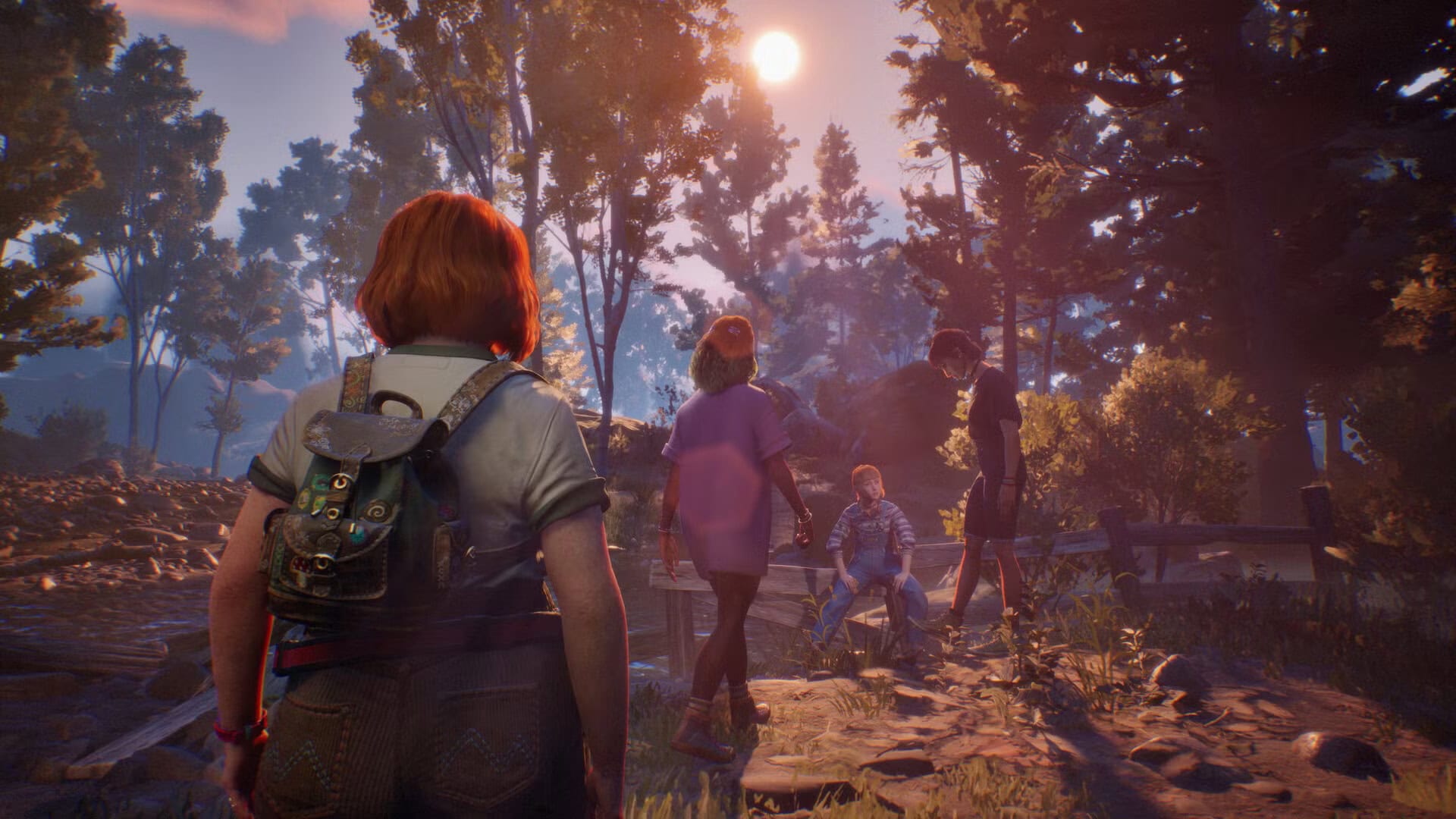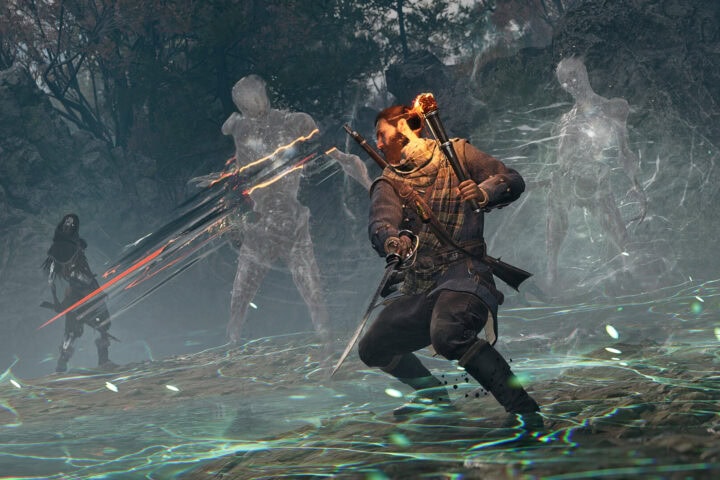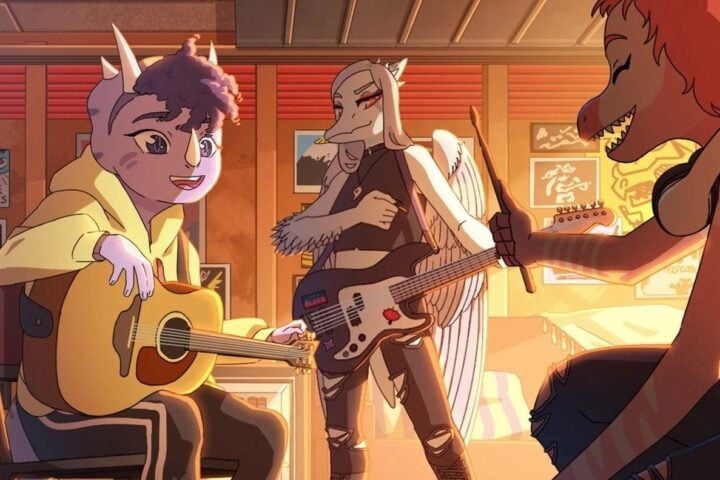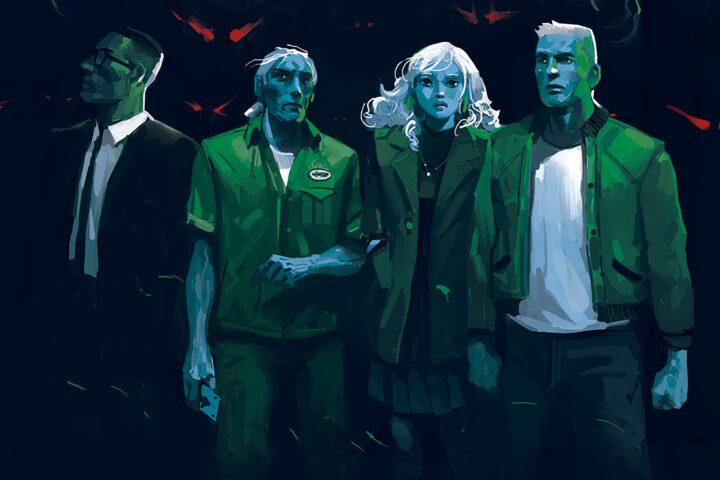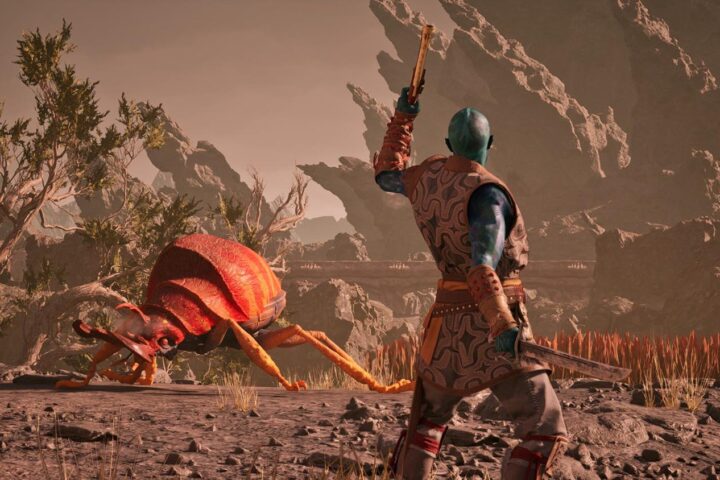Video game protagonists tend to have more important things to do than live their regular lives. Mundane, everyday existence is something to be left behind while they go off on some adventure. Narratives in the medium so rarely take the time to slow down, which is what makes Don’t Nod’s Lost Records: Bloom & Rage so vital. This is a deep immersion into the life of its central character, loving in its sense of detail and specificity.
The game has a more commercial hook, of course, with clear echoes of Stephen King’s It. Swann returns to her small Michigan hometown of Velvet Cove, reuniting for the first time in 27 years with the girls she formed a punk band with in the summer of 1995. We experience this period in copious flashbacks, and the stronger the bond between teenagers Swann, Nora, Autumn, and Kat grows, the more foreboding it feels that they haven’t spoken to each other for so long.
There are rumblings here of the supernatural, hints of past catastrophe. There’s even a mysterious package. Early on, Swann suggests that her reconnecting with her former friends could have consequences. Yet even by the end of “Tape 1,” the story is still coy about the reason for the girls’ estrangement, and about whatever weird power is at work in Velvet Cove.
Looser and more observational than Don’t Nod’s five-episode Life Is Strange, “Tape 1” is almost wholly devoted to exploring the lives of Swann and her friends throughout the summer. At times, it feels less like a choose-your-own-adventure thriller than a much more elaborate version of the low-key camping hangout game Wide Ocean Big Jacket.
Rather than a prelude to action or a backdrop for it, Swann’s life becomes the action. We watch her pack up her room, go to the video rental store, trek through the woods, and shuffle around a forgotten playground at night. Lost Records: Bloom & Rage is a bold assertion of trust in the audience—that we’re going to stick around and consider these shared moments between friends (and potentially more-than-friends) as enough to hold our interest.
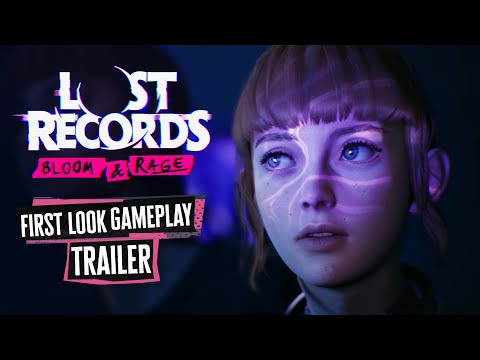
It certainly helps that each scene is so wonderfully lived-in—loaded with details that tell us as much about the characters as the naturalistic dialogue: from the weed stash in an empty VHS case to the X-Files fanfic hand-written on notebook paper that you find next to a smutty paperback. Swann is introverted, struggling with her weight and self-image. But she’s also outdoorsy and loves to film everything she can, and as often as she can. As the story transitions from her solitude to her interactions with the other girls, it’s hard not to share her palpable excitement at being around people who are interested in who she is and what she likes.
Beyond dialogue choices and puzzle segments requiring you to poke around each environment, so as to advance the story or find optional collectibles, Swann primarily interacts with the world through her camcorder. “Tape 1” highlights images that Swann can record, and once you’ve filmed enough footage, clips that are part of the same set are combined into a short “memoir” tape that Swann narrates. There’s one for capturing Nora and Autumn as they play instruments in a garage but also for scenic vistas or playground equipment that looks eerie in the moonlight.
Editing the memoirs isn’t terribly complex, as you can’t do much more than change the sequence of clips or swap in alternate footage. But by so forcefully foregrounding Swann’s enthusiasm to film her surroundings, the developers at Don’t Nod slyly alter how we perceive the world of the game. Because we’re free to choose what to include or exclude from each memoir, we begin to see objects as Swann does: how they tell a story about a larger whole, as well as how they look best when captured on grainy video. Swann’s enthusiasm becomes infectious, as the act of playing the game becomes about finding the joy in the everyday.
This game was reviewed with a code provided by Sandbox Strategies.
Since 2001, we've brought you uncompromising, candid takes on the world of film, music, television, video games, theater, and more. Independently owned and operated publications like Slant have been hit hard in recent years, but we’re committed to keeping our content free and accessible—meaning no paywalls or fees.
If you like what we do, please consider subscribing to our Patreon or making a donation.

